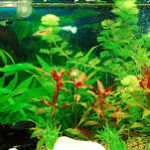Understanding Damaged Curly Hair and the Role of Conditioners
The Struggles of Curly Hair Damage
Curly hair is naturally more prone to damage than straight hair due to its structure. The twists and turns of each curl make it harder for natural oils to travel from the scalp to the ends, leaving curls dry and brittle. Environmental factors like sun exposure, humidity, and pollution worsen the problem. Additionally, heat styling, chemical treatments, and harsh brushing can strip moisture, leading to breakage, split ends, and frizz.
Damaged curly hair often loses its elasticity, making it harder to retain shape. Instead of bouncy, defined curls, hair may appear limp, stringy, or excessively tangled. Without proper care, the damage can become irreversible, forcing many to resort to drastic measures like cutting off length.
Why Conditioners Are Essential for Curly Hair
Conditioners play a crucial role in restoring moisture and strength to damaged curls. Unlike straight hair, curly hair needs extra hydration to maintain its shape and prevent frizz. A good conditioner works by sealing the hair cuticle, smoothing frayed strands, and replenishing lost proteins.
There are different types of conditioners, each serving a unique purpose:
Deep Conditioners penetrate the hair shaft, providing intense moisture and repairing damage from within. They are ideal for weekly treatments.
Leave-In Conditioners offer continuous hydration throughout the day, protecting curls from environmental stressors.
Rinse-Out Conditioners are used after shampooing to detangle and soften hair, making it more manageable.
Choosing the right conditioner depends on the hair’s porosity, density, and specific concerns. For damaged curls, products rich in natural oils, proteins, and humectants (like glycerin and honey) are highly beneficial.
Key Ingredients to Look For
Not all conditioners are created equal. For damaged curly hair, certain ingredients work better than others in reviving lost moisture and strength.
Shea Butter is a heavyweight moisturizer that seals in hydration and reduces breakage.
Coconut Oil penetrates deep into the hair shaft, preventing protein loss and adding shine.
Aloe Vera soothes the scalp and provides lightweight moisture without weighing curls down.
Hydrolyzed Proteins (like keratin and silk) repair broken bonds, restoring elasticity and reducing split ends.
Avoiding Harmful Ingredients is just as important. Sulfates, parabens, and silicones can further dry out curls, leading to more damage over time.
Understanding these factors helps in selecting the best conditioner to revive damaged curls effectively.
Top Conditioners for Repairing Damaged Curly Hair
Deep Conditioning Treatments for Intensive Repair
When curls are severely damaged, a deep conditioner can work wonders. These treatments are designed to stay on the hair longer, allowing active ingredients to penetrate deeply.
SheaMoisture Manuka Honey & Mafura Oil Intensive Hydration Masque is a favorite among curly-haired individuals. It combines shea butter, honey, and African oils to restore moisture and elasticity. Users report softer, more defined curls after just one use.
Olaplex No. 8 Bond Intense Moisture Mask is another powerful option. It focuses on repairing broken disulfide bonds within the hair structure, making it ideal for chemically treated or heat-damaged curls.
Leave-In Conditioners for Daily Nourishment
Leave-in conditioners provide ongoing protection, especially for those who struggle with dryness between washes.
Kinky-Curly Knot Today is a lightweight detangler that also acts as a leave-in. Its natural ingredients, like slippery elm and marshmallow root, help reduce breakage while enhancing curl definition.
Cantu Shea Butter Leave-In Conditioning Repair Cream is a thicker option for extremely dry curls. Packed with shea butter and essential oils, it locks in moisture and reduces frizz throughout the day.
Rinse-Out Conditioners for Regular Maintenance
For everyday use, a good rinse-out conditioner keeps curls hydrated without buildup.
DevaCurl One Condition Original is formulated specifically for curly hair, offering moisture without weighing it down. It’s silicone-free and helps maintain natural curl patterns.
Maui Moisture Heal & Hydrate + Shea Butter Conditioner is a drugstore gem. Infused with coconut oil and shea butter, it revives parched curls while being gentle enough for frequent use.
Protein Treatments for Strengthening Weak Curls
Protein overload can make hair brittle, but the right balance is essential for repair.
Aphogee Two-Step Protein Treatment is a salon-level solution for extreme damage. It temporarily fills gaps in the hair shaft, reducing breakage. However, it should be followed by a moisturizing treatment to prevent stiffness.
Curlsmith Bond Curl Rehab Salve is a gentler protein option, using plant-based proteins to strengthen without overloading the hair.
Choosing the right conditioner depends on the level of damage and hair type. Experimenting with different formulations helps in finding the perfect match.
How to Use Conditioners for Maximum Repair
Proper Application Techniques
Simply slathering conditioner on hair isn’t enough—technique matters.
Sectioning Hair ensures even distribution, especially for thick curls. Dividing hair into four parts and applying conditioner from roots to ends prevents missed spots.
The Squish-to-Condish Method is popular among curly-haired users. After applying conditioner, scrunching hair upwards with water helps curls absorb moisture better, enhancing definition.
How Often to Condition Damaged Curly Hair
Over-conditioning can lead to limp curls, while under-conditioning leaves them dry.
Coarse, High-Porosity Hair benefits from deep conditioning 2-3 times a week.
Low-Porosity Hair may need lighter conditioners to avoid buildup, with deep treatments once a week.
Leave-In Conditioners can be used daily, but the amount should be adjusted based on hair thickness.
Combining Conditioners with Other Treatments
For best results, conditioners should be part of a broader hair care routine.
Pre-Shampoo Oiling with coconut or olive oil protects hair during washing.
The LOC Method (Liquid, Oil, Cream) seals in moisture after conditioning.
Avoiding heat tools and using silk pillowcases also helps maintain repaired curls longer.
Maintaining Healthy Curls After Repair
Preventing Future Damage
Once curls are revived, maintaining their health is crucial.
Protective Styling (braids, twists) reduces manipulation and breakage.
Regular Trims prevent split ends from traveling up the hair shaft.
Sulfate-Free Shampoos cleanse gently without stripping moisture.
Long-Term Hair Care Habits
Healthy curls require consistency.
Nighttime Routine using a satin bonnet or pineapple method preserves moisture.
Hydration from Within—drinking water and eating omega-rich foods—supports hair health.
Final Thoughts on Curly Hair Recovery
Repairing damaged curls takes patience, but with the right conditioners and techniques, revival is possible. Understanding hair needs, choosing nourishing products, and adopting protective habits lead to bouncy, healthy curls that last.










